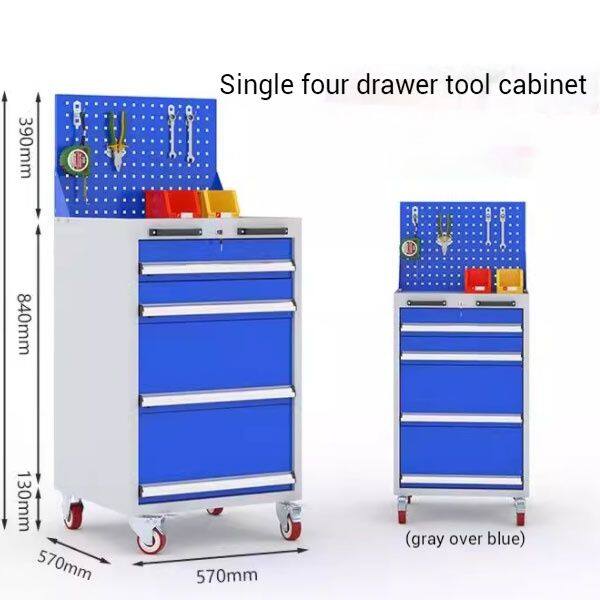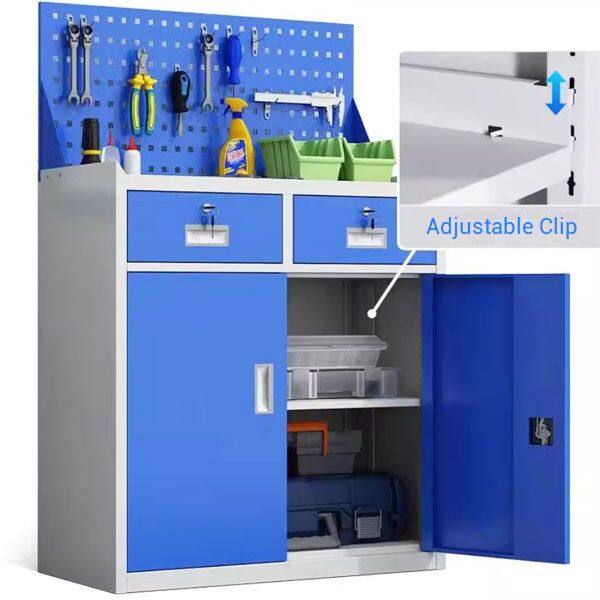-
 Sarah
Hi there! Welcome to my shop. Let me know if you have any questions.
Sarah
Hi there! Welcome to my shop. Let me know if you have any questions.
Your message has exceeded the limit.

Choosing the Best Rolling Tool Chest for Your Industrial Workspace
2025-10-28 15:55:22
Selecting the best rolling tool chest for your industrial workspace requires careful consideration of multiple factors that impact functionality, durability, and return on investment. This comprehensive guide will help you navigate the selection process and make an informed decision that meets your specific operational needs.

Understanding Industrial Workspace Requirements
Industrial environments present unique challenges that demand specialized storage solutions. When evaluating options for your industrial workspace, consider these critical factors:
Environmental Conditions
Temperature fluctuations and humidity levels
Exposure to chemicals, oils, and solvents
Dust and debris accumulation
Heavy-load requirements
Operational Demands
Frequency of tool access
Number of users sharing equipment
Mobility requirements across different workstations
Security needs for valuable tools
Key Selection Criteria for the Best Rolling Tool Chest
1. Construction Materials and Durability
The best rolling tool chest must withstand harsh industrial conditions:
Steel Construction Options:
16-gauge steel: Standard duty for moderate use
14-gauge steel: Heavy-duty for frequent industrial use
12-gauge steel: Maximum durability for demanding environments
Finishing Treatments:
Powder coating for corrosion resistance
Zinc plating for enhanced durability
Industrial-grade paint systems
2. Load Capacity and Weight Distribution
Evaluate your specific requirements:
| Tool Chest Type | Weight Capacity | Ideal Applications |
|---|---|---|
| Light Duty | 500-800 lbs | Light manufacturing, maintenance |
| Medium Duty | 800-1,200 lbs | General industrial use |
| Heavy Duty | 1,200-2,000 lbs | Heavy manufacturing, automotive |
3. Drawer Configuration and Organization
Optimal drawer layouts for industrial workspace efficiency:
Shallow drawers (2-3 inches): Small hand tools, measuring devices
Medium drawers (4-6 inches): Power tools, accessories
Deep drawers (8-12 inches): Large equipment, bulk items
Full-extension slides: Complete drawer access for easy organization
4. Mobility and Maneuverability
Essential features for industrial environments:
Industrial casters: Minimum 5-inch diameter for rough surfaces
Locking mechanisms: At least two locking casters for stability
Ball bearing construction: Smooth movement under heavy loads
Swivel capabilities: 360-degree rotation for tight spaces
Advanced Features for Industrial Applications
Security Systems
Protect valuable tools with advanced security:
Central locking systems: Single-key operation for all drawers
Individual drawer locks: Selective access control
Reinforced locking mechanisms: Resistance to forced entry
Keyless entry options: Electronic locks with audit trails
Ergonomic Design
Enhance worker comfort and safety:
Height-adjustable work surfaces: Accommodate different user heights
Padded handles: Reduce fatigue during transport
Anti-tip features: Prevent accidents when fully loaded
Soft-close drawers: Prevent pinching and reduce noise
Size and Space Considerations
Measuring Your Industrial Workspace
Before purchasing, assess your available space:
Width requirements: Allow 24-36 inches for full drawer extension
Depth considerations: Account for handle protrusion
Height limitations: Ensure clearance for overhead obstructions
Aisle width: Minimum 36 inches for comfortable navigation
Popular Size Configurations
| Dimensions | Drawer Count | Best For |
|---|---|---|
| 26" W x 18" D x 38" H | 5-6 drawers | Compact workstations |
| 41" W x 20" D x 45" H | 7-8 drawers | Standard industrial use |
| 53" W x 24" D x 52" H | 9-12 drawers | Large-scale operations |
Brand Comparison and Quality Assessment
Leading Industrial Tool Chest Manufacturers
Premium Tier:
Snap-on: Lifetime warranty, professional grade
Matco: Advanced features, excellent customer support
Mac Tools: Innovative designs, strong dealer network
Mid-Range Options:
Husky: Good value, reliable performance
Craftsman: Traditional quality, wide availability
Kobalt: Modern features, competitive pricing
Budget-Friendly Choices:
Harbor Freight: Affordable, basic functionality
Wilton: Decent quality, limited features
Stanley: Entry-level, simple design
 Maintenance and Care Guidelines
Maintenance and Care Guidelines
Regular Maintenance Procedures
Extend the life of your best rolling tool chest with proper care:
Daily Tasks:
Wipe down surfaces to remove dust and debris
Check caster functionality and lock engagement
Ensure drawers close properly and lock securely
Weekly Maintenance:
Lubricate drawer slides and caster bearings
Inspect for loose hardware and tighten as needed
Clean drawer interiors and organize contents
Monthly Inspections:
Check for signs of wear or damage
Test all locking mechanisms
Verify weight distribution and stability
Customization Options
Tailoring Your Tool Chest to Specific Needs
Enhance functionality with specialized accessories:
Drawer dividers: Custom organization for small parts
Foam inserts: Protection for precision tools
Power strips: Integrated electrical outlets
Lighting systems: LED illumination for dark areas
Pegboard panels: Additional hanging storage options
Making the Final Decision
Evaluation Checklist
Before purchasing, ensure your selection meets these criteria:
[ ] Adequate weight capacity for your tools
[ ] Appropriate size for your workspace
[ ] Quality construction and materials
[ ] Smooth drawer operation and locking mechanisms
[ ] Reliable mobility and stability
[ ] Sufficient security features
[ ] Warranty coverage and customer support
[ ] Positive customer reviews and industry reputation
Choosing the best rolling tool chest for your industrial workspace requires careful evaluation of your specific needs, budget constraints, and long-term operational requirements. By considering the factors outlined in this guide, you can make an informed decision that enhances productivity, improves organization, and delivers lasting value for your industrial operations.
Remember that investing in quality tool storage is not just about organization—it’s about creating a more efficient, safer, and more productive work environment that supports your business goals and operational excellence.

Tags: Rolling Tool Chest, Industrial Workspace, Choosing the Rolling Tool Chest

